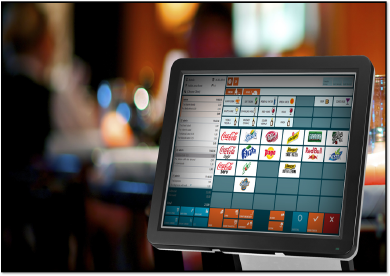A well-designed menu is more than just a list of dishes—it's a carefully crafted tool that can drive sales, enhance the dining experience, and reflect the personality and concept of your restaurant. Here are some best practices for restaurant owners to consider when crafting their menus:
Know your audience
Before designing your menu, take the time to understand your target audience's preferences, tastes, and dietary needs. Consider factors such as age, demographics, cultural background, and dining habits to tailor your menu offerings to meet their needs and expectations.
Create a cohesive theme
Your menu should reflect the overall theme, ambiance, and concept of your restaurant. Choose fonts, colors, and imagery that align with your restaurant's brand identity and create a cohesive visual experience for customers.
Keep it organized
Organize your menu in a logical and intuitive manner that makes it easy for customers to
Know your audience
Before designing your menu, take the time to understand your target audience's preferences, tastes, and dietary needs. Consider factors such as age, demographics, cultural background, and dining habits to tailor your menu offerings to meet their needs and expectations.
Create a cohesive theme
Your menu should reflect the overall theme, ambiance, and concept of your restaurant. Choose fonts, colors, and imagery that align with your restaurant's brand identity and create a cohesive visual experience for customers.
Keep it organized
Organize your menu in a logical and intuitive manner that makes it easy for customers to
navigate. Group similar items together, such as appetizers, salads, entrees, and desserts, and use formatting techniques such as bold fonts or borders to differentiate sections.
Use high-quality visuals
Visuals play a crucial role in attracting customers' attention and enticing them to try your dishes. Use high-quality photographs or illustrations to showcase your menu items and make them look as delicious as they taste. Ensure that images are accurately representative of the actual dishes to avoid disappointing customers.
Highlight your specialties
Showcase your restaurant's signature dishes, chef's recommendations, and seasonal specials prominently on your menu.
Use high-quality visuals
Visuals play a crucial role in attracting customers' attention and enticing them to try your dishes. Use high-quality photographs or illustrations to showcase your menu items and make them look as delicious as they taste. Ensure that images are accurately representative of the actual dishes to avoid disappointing customers.
Highlight your specialties
Showcase your restaurant's signature dishes, chef's recommendations, and seasonal specials prominently on your menu.
Published: April 8, 2020
Crafting a Deliciously Satisfying Menu
Use descriptive language and enticing imagery to highlight these items and make them stand out from the rest of the menu.
Offer variety and balance
Provide a diverse selection of menu items to cater to different tastes, preferences, and dietary needs. Offer a balance of familiar favorites and adventurous options, as well as options for vegetarians, vegans, gluten-free, and other dietary restrictions.
Keep descriptions concise and informative
Use concise, descriptive language to communicate the key ingredients, flavors, and cooking techniques used in each dish. Avoid overwhelming customers with lengthy descriptions and unnecessary details, and focus on highlighting what makes each dish unique and delicious.
Price strategically
Price your menu items strategically to maximize profitability while remaining competitive in the market. Use pricing psychology techniques, such as charm pricing (e.g., $9.99 instead of $10) or tiered pricing, to make prices seem more appealing to customers..
Offer variety and balance
Provide a diverse selection of menu items to cater to different tastes, preferences, and dietary needs. Offer a balance of familiar favorites and adventurous options, as well as options for vegetarians, vegans, gluten-free, and other dietary restrictions.
Keep descriptions concise and informative
Use concise, descriptive language to communicate the key ingredients, flavors, and cooking techniques used in each dish. Avoid overwhelming customers with lengthy descriptions and unnecessary details, and focus on highlighting what makes each dish unique and delicious.
Price strategically
Price your menu items strategically to maximize profitability while remaining competitive in the market. Use pricing psychology techniques, such as charm pricing (e.g., $9.99 instead of $10) or tiered pricing, to make prices seem more appealing to customers..
Copyright 2020. Divas And Money Is A Registered Trademark of Vision Media Arts. All Rights Reserved.
Provide a diverse selection of menu items to cater to different taste.
TWITTER




Maximizing Your Marketing Impact for Growth
Navigating Permits and Regulations
Smart Tips to Ensure Food Safety in Your Restaurant
Strategies for Increasing Bar Sales in Your Restaurant




Maximizing the Benefits of Food Delivery Services for Your Restaurant
Maximizing the Benefits of Food Delivery Services for Your Restaurant
5 Smart Tips to Control Food Cost in Your Restaurant
Simplifying Your Operations for Success With a POS System


The Basics of Recruiting and Hiring for Your Restaurant
5 Smart Tips to Control Food Cost in Your Restaurant
Tell-Tale Signs That He Might Be Cheating
5 Things You're Doing That May Cause You To Age Poorly


Interview Tips That Will Help You Get The Job
Don't Let Your Job Destroy Your Relationship


Stop Making Excuses And Start Working Out
Eat These Super Foods And Have Super Sex


Top 10 Best Home Improvements For Your Dollar
Keep Your Bath Looking And Feeling Brand New


Simple Decorating Tips To Make Your Home More Stylish
What To Do If He's Absolutely Just "No Good" In Bed







Update regularly
Keep your menu fresh and exciting by rotating seasonal specials, introducing new dishes, and removing underperforming items. Regularly updating your menu not only keeps customers coming back for more but also allows you to capitalize on seasonal ingredients and culinary trends.
By following these best practices for menu design, restaurant owners can create menus that satisfy customers, drive sales, and reinforce their restaurant's brand identity and concept. Remember to stay creative, customer-focused, and open to feedback and experimentation as you craft your menu to ensure its success in the competitive restaurant industry.
Keep your menu fresh and exciting by rotating seasonal specials, introducing new dishes, and removing underperforming items. Regularly updating your menu not only keeps customers coming back for more but also allows you to capitalize on seasonal ingredients and culinary trends.
By following these best practices for menu design, restaurant owners can create menus that satisfy customers, drive sales, and reinforce their restaurant's brand identity and concept. Remember to stay creative, customer-focused, and open to feedback and experimentation as you craft your menu to ensure its success in the competitive restaurant industry.